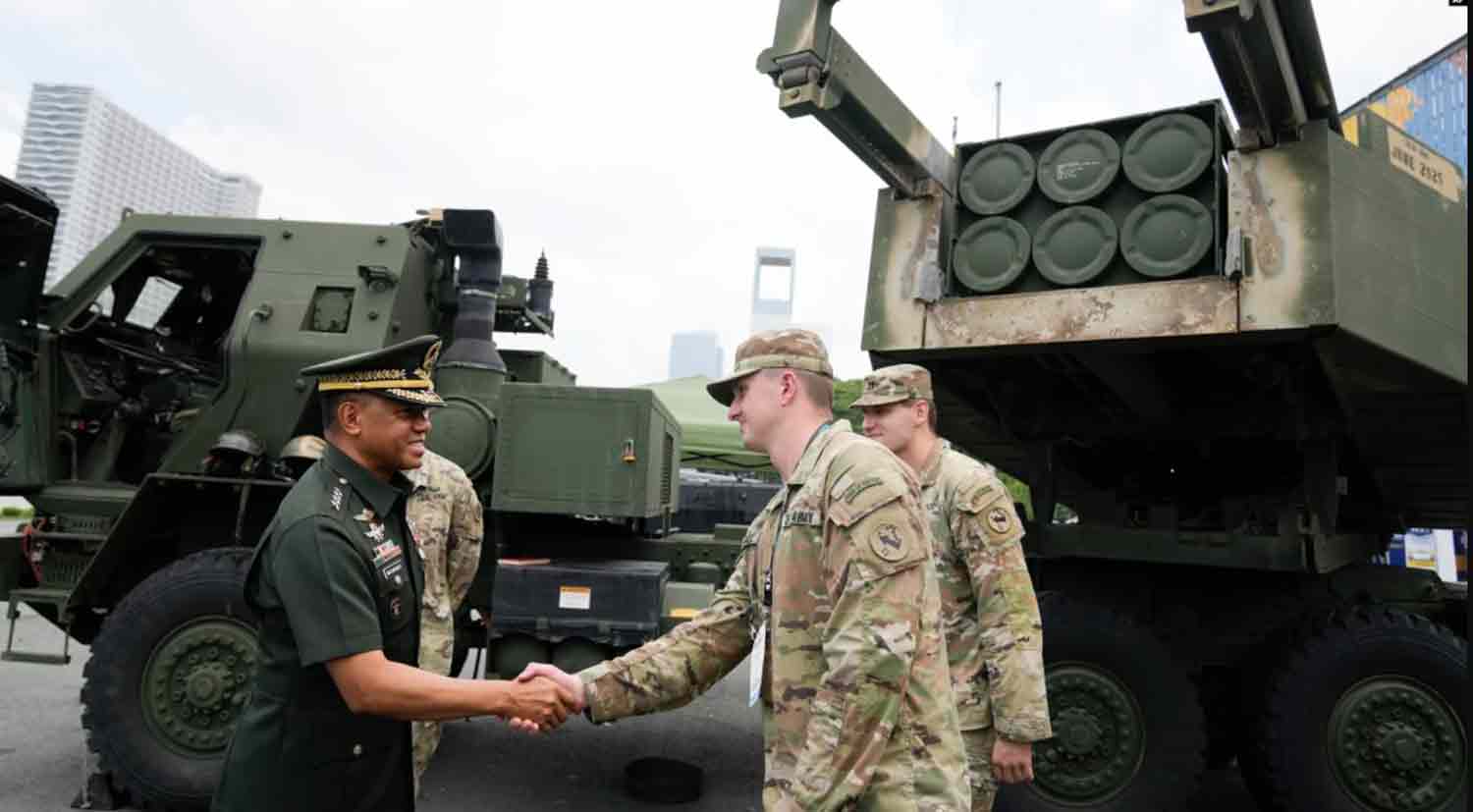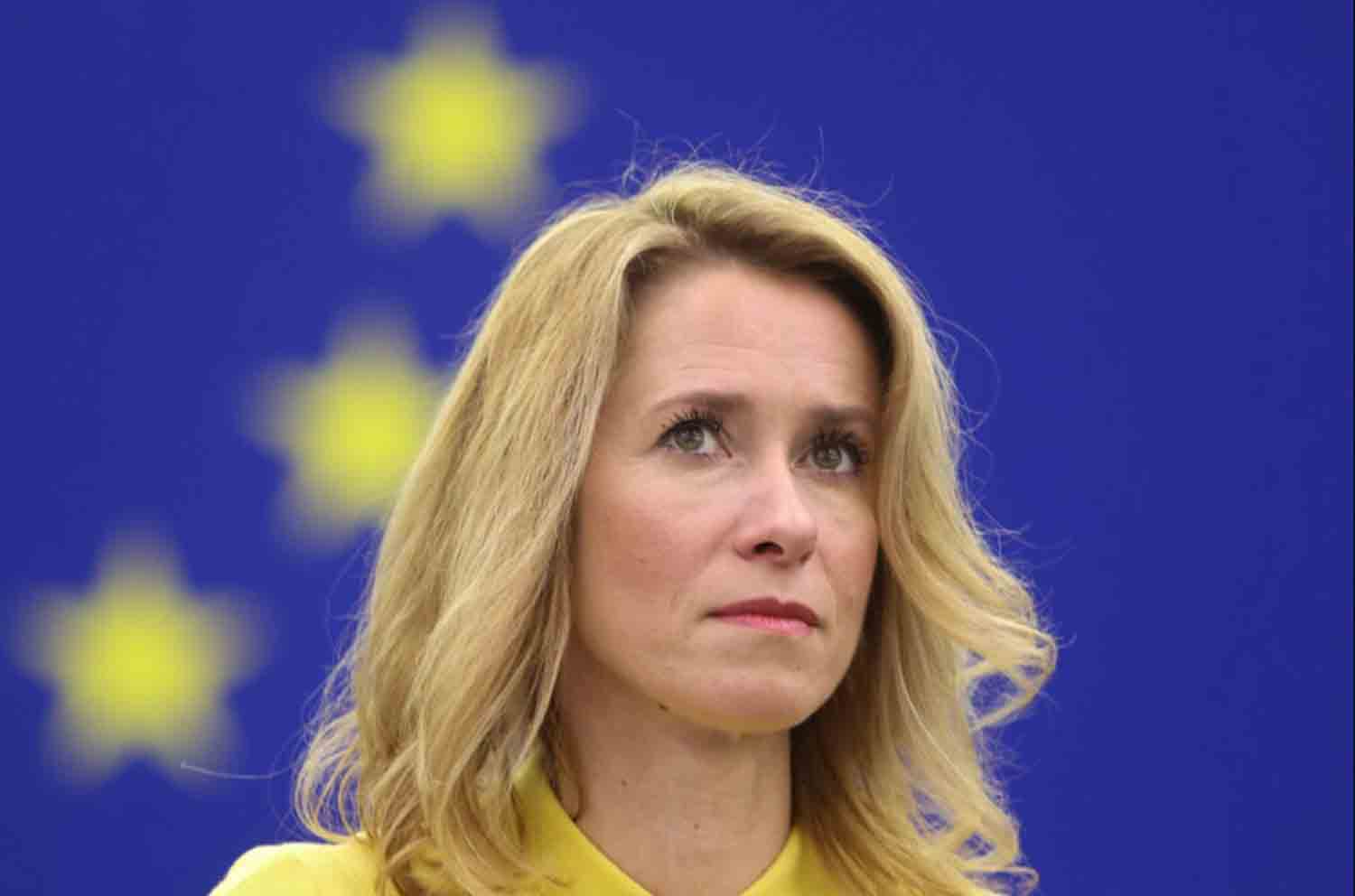As Donald Trump and Kamala Harris competed in the 2024 U.S. presidential election, troops from Estonia and Taiwan were engaged in joint training at Fort Sill in Oklahoma, focusing on the U.S.-manufactured HIMARS long-range rocket systems acquired by their governments. This military collaboration and training were part of a broader initiative by the Biden administration to strengthen ties between the U.S. and its allies, which Defense Secretary Lloyd Austin referred to as a global “convergence” aimed at addressing the rising autocratic threats posed by China, Russia, North Korea, and Iran.
This week, military leaders and officials are reassessing these weapon systems, along with many others, with heightened concern following the Trump administration’s temporary halt of intelligence sharing with Ukraine, which rendered HIMARS rockets less effective for a period. Allied nations are still grappling with the ramifications of this situation. In Europe, both the European Union and its member states are committing to a significant rearmament initiative, not only to deter Russia but also to reduce their long-standing reliance on the United States.
This unprecedented rearmament effort includes a substantial 150-billion-euro ($162.5 billion) EU defense package, which carries significant implications for the bloc, its member countries, and European arms manufacturers. “We must recognize not only Russia as a threat but also consider broader global geopolitical shifts and where the U.S. will focus its strategic priorities,” stated European Defence Commissioner Andrius Kubilius during a press briefing this week. This marks a significant shift in perspective. Since the full-scale invasion of Ukraine by Russian President Vladimir Putin in 2022, European nations have been collaborating with the U.S. military through NATO to develop advanced defense strategies in anticipation of potential aggression from Moscow against alliance members in Eastern or Northern Europe.
According to defense sources, part of the strategy involves showcasing a strong capability to retaliate against Russia, which heavily relies on U.S.-manufactured rockets and F-35 fighter jets. Additionally, this strategy depends on U.S. support in intelligence sharing, air-to-air refueling, and electronic warfare capabilities, all of which could be withdrawn at the discretion of the U.S.
However, the real concern for U.S. allies, including Japan, Australia, and South Korea, lies in the potential malfunction of weapon systems they have already acquired. “The Europeans are realizing that without U.S. backing, their forces are quite exposed,” stated Sten Rynning, a visiting lecturer at NATO’s defense college and a professor at the Danish Institute for Advanced Study. He added, “Nearly all allies have procured a significant amount of equipment from the United States to strengthen their ties within the NATO alliance and demonstrate solidarity.”
“However, if the U.S. decides to disable European equipment, it has the capability to do so. It can withhold software updates, spare parts, and critical intelligence,” he noted. This situation presents America’s closest allies with a straightforward choice: they can either strive to develop their own independent military capabilities free from U.S. reliance or continue to engage in U.S. technology partnerships while attempting to reduce the risk of being left unsupported.
A former U.S. official with experience in Europe and the Middle East remarked, “Donald Trump has instilled significant fear among U.S. allies, but some see this as an opportunity.” In the near to medium term, many key U.S. allies, including Britain, Poland, Australia, Japan, and South Korea, are likely to seek to maintain both options. Meanwhile, the European Union and several of its most influential nations have increasingly expressed a desire to move away from dependence on the U.S.
In a surprising turn of events, newly appointed Canadian Prime Minister Mark Carney appears to be contemplating a significant shift in alliances, potentially aligning Canada more closely with the European Union amid escalating tensions with Washington, where Trump has been vocal about the possibility of making Canada the 51st U.S. state. This consideration may even lead to the cancellation of Canada’s next order of F-35 Joint Strike Fighters.
TECHNOLOGY AND RHETORIC RAISE CONCERNS
It is perhaps not surprising that stock prices for non-U.S. defense firms have surged this year, even as many other stocks have declined due to Trump’s aggressive trade policies against both allies and rivals. South Korea’s Hanwha Aerospace, which supplies artillery to Europe, has seen its stock price more than double since January. Similarly, Germany’s Rheinmetall has experienced a doubling of its value since last year and anticipates a further increase in orders of up to one-third by the end of 2025.
However, having the capability to produce one’s own weapon systems does not automatically ensure their effective operation. For instance, the British Storm Shadow and French Scalp missiles, which are essentially the same system marketed under different names, have become ineffective in Ukraine due to Russian jamming, lacking the necessary U.S. technology to ensure they hit their targets.
Nevertheless, there are alternative solutions available. This week, just prior to Trump’s conversation with Putin on Tuesday, Ukrainian President Volodymyr Zelenskiy revealed that Kyiv has successfully developed a long-range strike drone capable of reaching distances of three thousand kilometers (1,860 miles).
French President Emmanuel Macron has been actively reminding both Europe and the Kremlin that France’s nuclear deterrent is fully autonomous and solely under French control, emphasizing that he may utilize it to protect other European countries. Since the 1960s, following Charles de Gaulle’s leadership, French officials and military strategists have periodically expressed concerns that the United States might eventually withdraw its support from Europe, especially during a crisis. De Gaulle raised doubts about whether a future U.S. president would be willing to risk the nuclear destruction of American cities like New York to defend European cities such as Paris from occupation or devastation.
Recently, Macron shared with several European newspapers his plan to initiate a diplomatic campaign aimed at persuading European nations, accustomed to purchasing American military equipment, to consider European alternatives instead. This initiative includes encouraging countries currently interested in acquiring U.S. Patriot missiles from Lockheed Martin—soon to be manufactured in Germany—to opt for the French-Italian SAMP/T system instead. Additionally, he is advocating for those contemplating further investments in the F-35, a jet primarily led by U.S. interests but produced by a multinational consortium, to choose the less advanced French Rafale fighter jet.
During a temporary halt in U.S. intelligence support for Ukraine, which also impacted the operation of its F-16s, French and Ukrainian engineers worked diligently to deploy French-made Mirage jets to intercept Russian missiles. This effort served as a clear promotion of French and, more broadly, European military technology. Furthermore, the pan-European missile manufacturer MBDA is developing a longer-range missile capable of reaching a thousand kilometers for France, Germany, Italy, and Poland, although the timeline for its completion remains uncertain.
FRENZIED NEWS CYCLE
Concerns in Europe regarding reliance on specific systems, especially in satellite communications, have been escalating since 2022. This was highlighted when Elon Musk’s Starlink reportedly denied Ukrainian access to its services to aid operations against Russian forces in Crimea.
In response to this situation, Taiwan, increasingly anxious about a possible Chinese invasion, has allegedly secured agreements with alternative satellite providers to ensure access during emergencies.
Moreover, Taiwan has been more proactive than many other nations in acquiring U.S. military equipment and has indicated a willingness to purchase additional resources under the Trump administration, which began in January.
The developments in Ukraine, coupled with Trump’s apparent inclination towards Russia, have heightened Taiwan’s apprehensions.
In the immediate future, much hinges on how the Trump administration approaches upcoming negotiations with Russia and Ukraine. If Washington is perceived as re-aligning with Ukraine, it will likely reassure other allies; conversely, if Trump is seen as favoring Putin, it will raise further concerns.
America’s allies are now anxiously observing a Trump administration that they fear may seek to re-establish global power “spheres of influence.” There are worries that Washington may be more amenable to Moscow and Beijing asserting dominance in Europe and Asia, respectively, as long as the U.S. remains unchallenged in its own region, where Trump has expressed ambitions regarding the Panama Canal, Greenland, and Canada.
The brief suspension of U.S. intelligence and military support for Ukraine may have lasting implications for America’s relationships with its allies. Throughout the Biden administration and much of the recent past, dating back to World War II, the U.S. has encouraged its allies to procure American military systems to strengthen ties and ensure collaborative defense efforts.
In recent weeks, allies closely aligned with the U.S., such as Japan, Britain, South Korea, and Australia, have remained relatively reserved, eager to maintain positive relations with the Trump administration. However, there has been a noticeable increase in discussions within South Korea, Japan, and Australia regarding the potential need for their own nuclear arsenals in the future. In the UK, there are conversations about “diversifying” its nuclear deterrent beyond the U.S.-manufactured Trident missile.
Despite this, Britain reaffirmed its commitment to the Trident program this week, advancing the construction of new submarines designed to carry U.S.-owned ballistic missiles. The future trajectory of these alliances, particularly in light of the changes instigated by Trump’s approach, remains uncertain.
A European defense source, speaking anonymously, remarked earlier this month, “Everything is uncertain, or however you wish to phrase it.” A contact from the Baltic region was more direct, stating, “Everyone is fearful, and it’s due to Trump.”
Discover more from Defence Talks | Defense News Hub, Military Updates, Security Insights
Subscribe to get the latest posts sent to your email.





